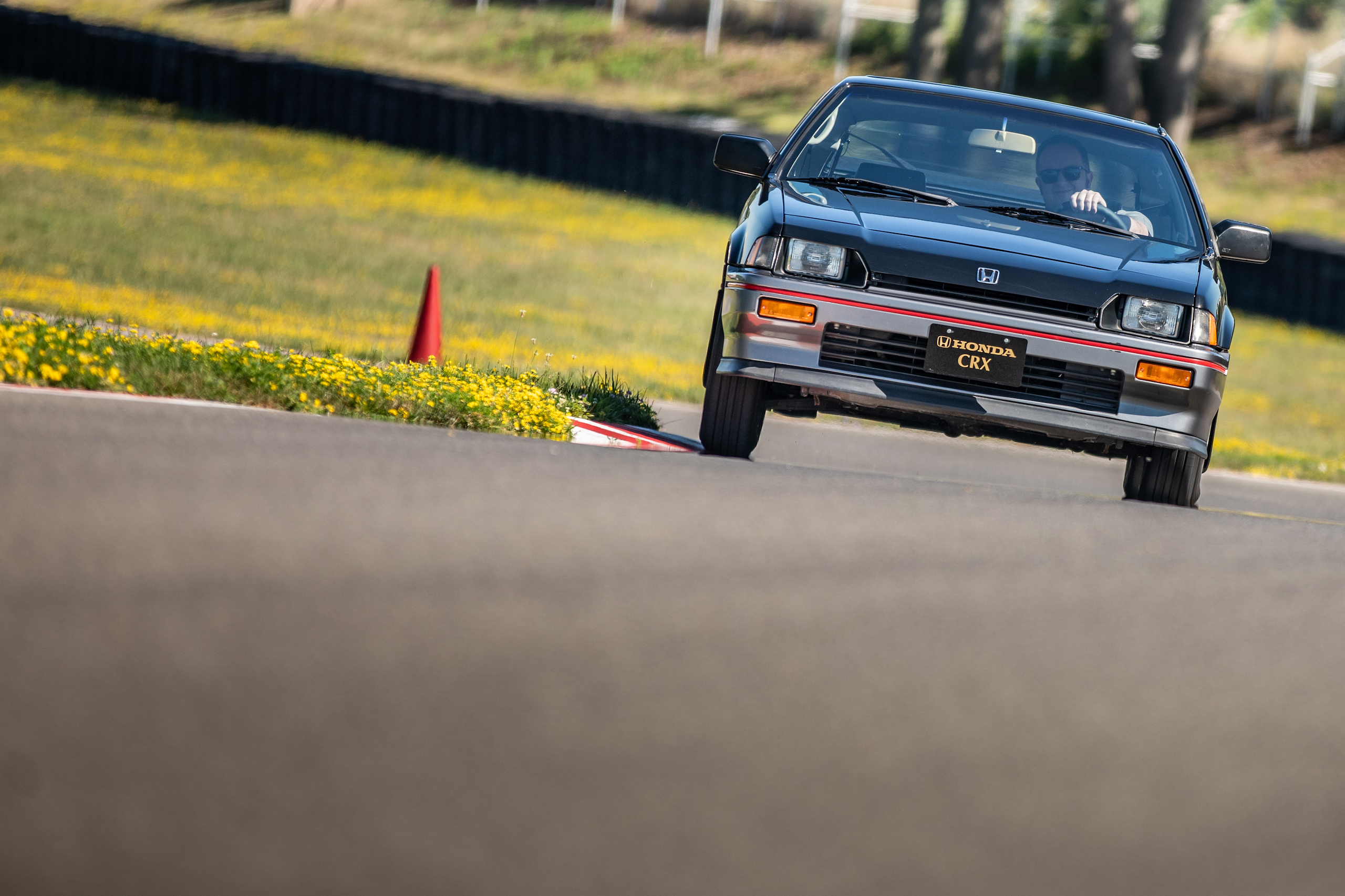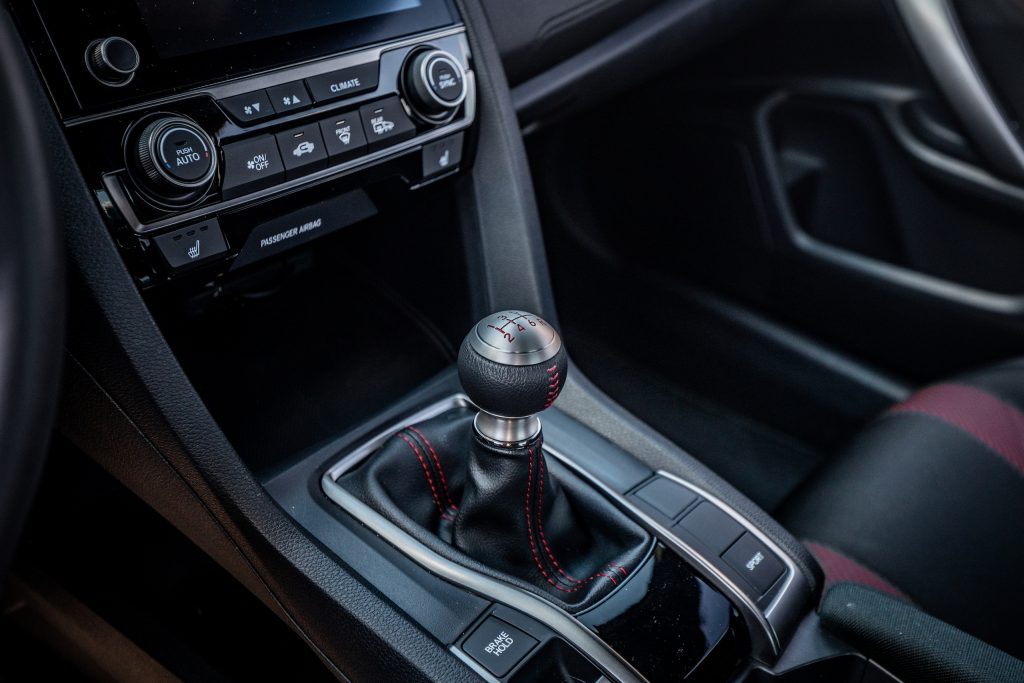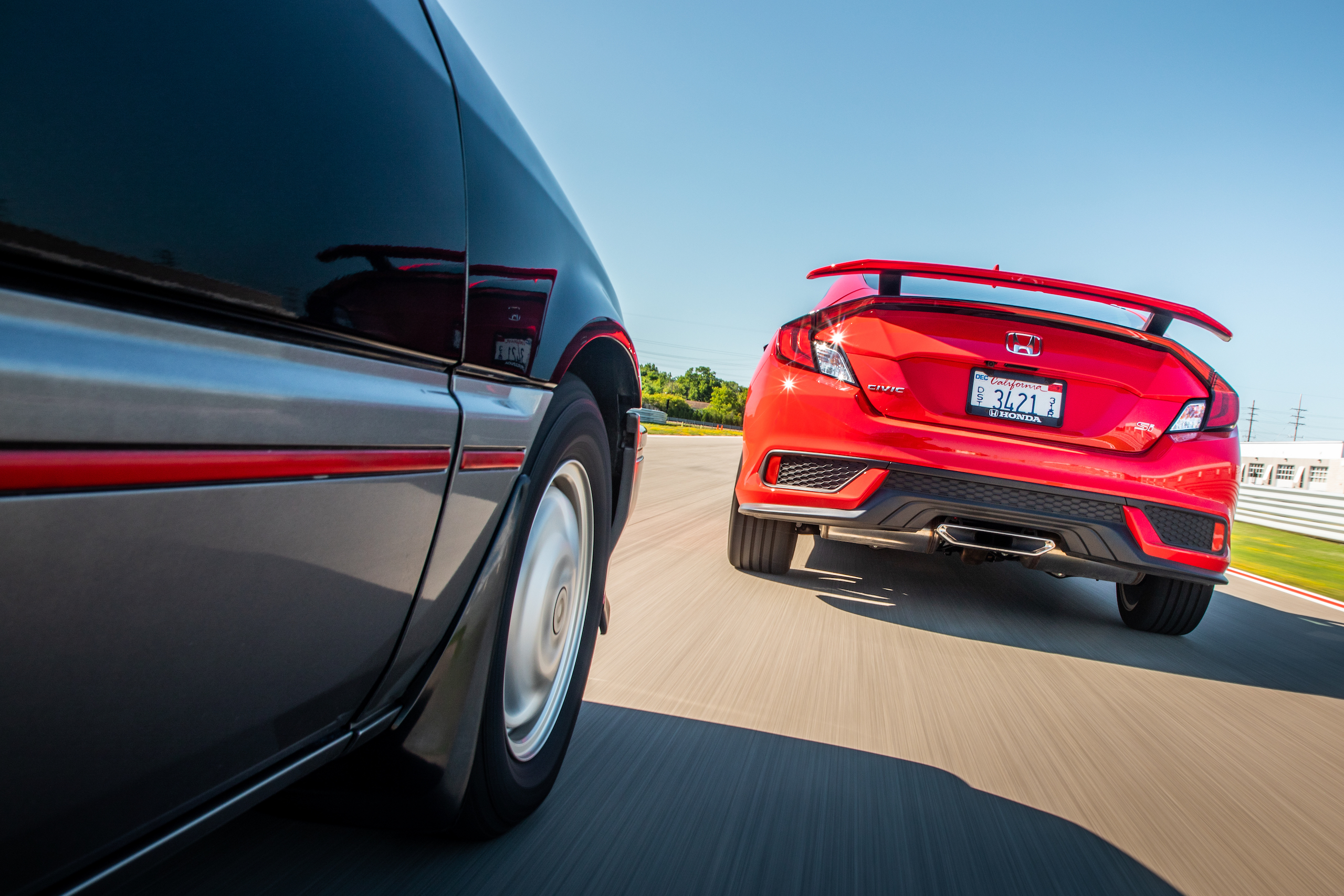By Jack Baruth / Hagerty.com
What is this, a Civic for ants? The original Honda CRX is small enough to drive right through the uncanny valley separating it from the proportions of modern cars. You could make it three feet longer and it still wouldn’t measure up to the 2020 Civic Si coupe sitting next to it. Yet to the buyers of the time, both in Japan and here, the sporting variant of Honda’s third-generation subcompact wasn’t that petite. It’s measurably larger than both the 1972 Civic and the 1980 Civic before it, and those were full five-seaters. In the United States, the CRX was a two-person car; the vestigial rear bench supplied overseas fell afoul of the same regulations that kept a similar item out of the ’70s Mercedes 450SL.
In any event, you wouldn’t want to share and enjoy the CRX with more than one friend at a time-that is, if you want to keep them. For the driver and that single lucky passenger, however, the accommodations are quite pleasant. Your six-foot-two, 37-inch-sleeved author had no trouble finding a comfortable position behind the wheel … once I accepted that the wheel was going to be more or less in my lap. The instrument panel, too, is almost below the line of sight. Around you there’s almost nothing but glass. To anyone brought up on modern automobiles and their thick-pillar/high-beltline proportions, it’s a radical reassessment of the way men and machines interact.
We’ve been given brief custody of this like-new 1985 CRX Si from American Honda’s collection, and it has fewer than ten thousand miles on it. Feels and acts like a new car. Starts immediately with a twist of the flimsy key in the tucked-away ignition switch, a secondary benefit of the fuel injection that makes this an S-i-for-injected and boosts the 12-valve, 1.5-liter inline-four’s power from a carbureted 76 horses to a smooth-running 91. There’s something fascinating and immediately lovable about just how little complexity the Honda displays. You get a center console, which was considered quite sporty at the time, but there’s almost nothing in it.

The five-speed stick has long but accurate shifts, moderated by a clutch that feels fingertip-light. On paper, the CRX is just a little slower than today’s CR-V sport-utility vehicle. In practice, you need to stir the gearbox a bit to make that kind of pace. Overseas buyers had access to a rip-snorting 135-horse CRX Ballade; this ain’t that, not by a long shot, and even if we didn’t want to respect the Honda’s age the fun would stop at 6500 rpm or thereabouts anyway. The payoff is a tremendous sense of involvement: with the engine, with the constant swapping of ratios, with the unfiltered (and unassisted) but slightly flexible feedback from a wheel-and-tire package that would fit comfortably inside the rim of most modern SUV and pickup wheels.

This is a car with which to fall in love: nimble, forthright, difficult to get into trouble and easy to bring back from the brink. The CRX that followed it was more of an uncompromised sporting proposition and could be turned into an impressively fast club racer, but this sealed-beam example isn’t anything more than a fashionable body on everyday underpinnings. It even shares a wheelbase with the 1972 Civic. Doesn’t matter. Honda got it right, the same way it did with almost every Civic made from 1972 to 2011 or so.
There are a few minor quibbles. The seats are tiny. Not in the sense that they don’t fit the big-and-tall crowd, because they do, but more in the sense of simply being something to sit on rather than in. Having driven my 1986 Mercury Grand Marquis shortly before piloting this vintage Civic, I can attest that it’s simply a characteristic of the era to have the headrest between your shoulder blades. Wind noise, as well, is a bit high, not from the shape of the thing but just from the thin doors and uninsulated body.

Contemporary reviews expressed delight in the CRX while penalizing it for not being an outright sports car. Today, the Honda’s mission in life seems clearer: it was just meant to be a cheerful, hassle-free, durable way in which to get around. The price, which equates to about $21,000 in today’s stimulus-weakened dollars, just makes the case for the CRX more explicit and unassailable. At the time, it really only had one natural enemy, and that was the breadvan Civic two-door hatch with which it shared a showroom floor.
Sadly, the CRX didn’t last very long in America. That sleek next-generation hatchback yielded to the del Sol coupe and then to nothing at all. The hybrid Insight and CR-Z two-seaters had some of the CRX mojo but were fatally marred by Honda’s insistence on fuel economy über alles. Both cars are absolutely wicked fun with a proper K-series Honda engine in them, by the way. Had they been sold like that, we’d likely remember them differently.
Almost alone among automakers, Honda has continued to offer some sort of affordable manual-transmission sporty subcompact all the way to the present day. Yet in this tepid, cowardly Götterdämmerung of automotive enthusiasm, even the Marysville Wrecking Crew is pulling their horns in a bit. The manual-transmission Accord disappeared for this model year, as did the coupe body style for the Civic. Nor is there a Civic Si of any sort in 2021, making the Civic Si coupe sitting next to our museum-quality CRX a future candidate for historical preservation itself.
(If you absolutely must have a sporting Honda this year, the company would love to sell you a six-speed turbo hatchback or the mighty Civic Type R.)
This is a shame and then some, because while the 2020 Civic Si coupe shares absolutely nothing with the 1985 CRX Si but a model name, it’s tremendously compelling in its own right. The supercar-baiting torque-steer antics of the Type R, to say nothing of its less-than-friendly ride qualities, are conspicuous by absence. In their place we simply have an enthusiastic-feeling coupe with just enough power to convey a sense of excitement on the move. After the CRX, it feels like an Acura Legend, but don’t be fooled; after twenty miles to readjust one’s perspective the Civic is revealed to be what it has always been: a car that is more or less the right size.

Much like its fuel-injected predecessor from 1985, this 1.5-liter turbo mill is a low-revving, sedate-sounding effort that nevertheless rushes to the redline with a passable willingness. The tables have turned a bit on the “Si” brand; thirty-five years ago, a well-driven CRX Si could see off an everyday Olds Cutlass or Toyota Camry, but today the mid-size sedans, and even a few mid-size SUVs, have this Civic’s pace and more. On the positive side, the broad range of computer-controlled torque mean you don’t need to shift the six-speed gearbox nearly as much as you did thirty-six years ago … is that a positive? Let’s just say it is.

Around any sort of race track, or even on a back road, the new Civic can immediately cause the old one to vanish from its rearview mirror. The power-assisted steering feels numb after the CRX but by modern standards it’s more than well done, giving accurate information and adequately communicating that crucial moment when the front tires start to underperform. If only the Civic had the delightful visibility that used to come standard with every Honda! This one’s like sitting in bathtub, surrounded by thick steel pillars in the most inconvenient places possible. Easy to complain about, right up to the moment that an inattentive Suburban driver runs a light and sends you into low earth orbit, at which point you’ll be grateful for Honda’s ACE structure and tireless focus on passive safety.

If we need to come up with some similarities between the two cars, it’s not that hard: the dashboard is small on both cars, the seats have that same just-good-enough feeling, the shifters are both best-in-class, and the black interior plastic still scratches the minute you look at it hard. In the CRX, it’s a red line that signifies the Si’s sporting intent; with the new Civic, it’s black trim. Neither car is what you would call handsome, but both are compelling and desirable to the right sort of person. If you know, you know.

Beyond the surface similarities, the 1985 CRX Si and the 2020 Civic Si are united by a sense of purpose. They’re meant to be unassuming, undemanding, and unexceptional-right up to the moment that you need to get somewhere in a hurry, at which point the entire vehicle reveals a slightly deranged willingness to assist you in this task, a desire to make good time that manifests itself in everything from the light touch of the shifter to the reassuring way the nose dives a bit, but not too much, under hard braking. They are commendable for their honesty. Back in 1985, the zeitgeist CRX was the HF, with its stratospheric fuel economy and unimpeachable progressive credentials. In 2021, it’s probably the Civic Type R, which is a sort of love letter from Honda to every nutjob who ever tried to put three hundred horsepower in a Civic for a Friday-night street race. In the times between now and then, however, the Si badge has always connoted a sense of just enough.
If you have the ability to find a perfect first-or-second-generation CRX, you should buy one. They were very special and we won’t see their like again. In the meantime, however, the 2020 Civic Si amounts to an instant classic, a car you could probably drive and enjoy for a quarter-million charming miles and still sell for a fair buck. Outside the Honda collection, you probably won’t find a CRX as good as the one we drove on this day-but a great Civic Si is well within reach. Don’t miss out.
Enjoying this article? Sign up for Hagerty’s newsletters to see more like it.
April 13, 2021 at 02:28AM
https://ift.tt/3uE1vqi
CRX + Civic: The Newest Classic Honda Si Meets an Original Superstar - imsa.com
https://ift.tt/38hkzRl
Honda







No comments:
Post a Comment